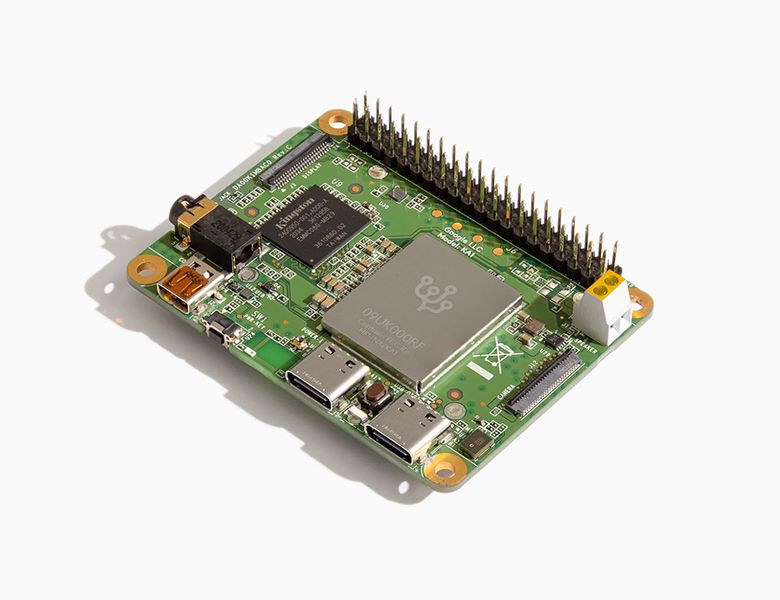
Google Coral Dev Board Mini by Google
The Coral Dev Board Mini is a single-board computer that provides fast machine learning (ML) inferencing in a small form factor. It’s primarily designed as an evaluation device for the Accelerator Module (a surface-mounted module that provides the Edge TPU), but it’s also a fully-functional embedded system you can use for various on-device ML projects.
- CPU MediaTek 8167s SoC (Quad-core Arm Cortex-A35)
- GPU IMG PowerVR GE8300 (integrated in SoC)
- ML accelerator Google Edge TPU coprocessor
- RAM 2 GB LPDDR3
- Flash memory 8 GB eMMC
- Wireless Wi-Fi 5 (802.11a/b/g/n/ac); Bluetooth 5.0
- Audio 3.5mm audio jack; digital PDM microphone; 2.54mm 2-pin speaker terminal;
- Video micro HDMI (1.4); 24-pin FFC connector for MIPI-CSI2 camera (4-lane); 39-pin FFC connector for MIPI-DSI display (4-lane)
- Input/output 3.5mm audio jack; digital PDM microphone; 2.54mm 2-pin speaker terminal; micro HDMI (1.4); 24-pin FFC connector for MIPI-CSI2 camera (4-lane); 39-pin FFC connector for MIPI-DSI display (4-lane)
Purchase
Contribute
Have some info to add for this board? Edit the source for this page here.
Adafruit Blinka Installation
We use a special library called adafruit_blinka (named after Blinka, the CircuitPython mascot) to provide the layer that translates the CircuitPython hardware API to whatever library the Linux board provides.
For example, on Raspberry Pi we use the python RPi.GPIO library. For any I2C interfacing we'll use ioctl messages to the /dev/i2c device. For SPI we'll use the spidev python library, etc. These details don't matter so much because they all happen underneath the adafruit_blinka layer.
